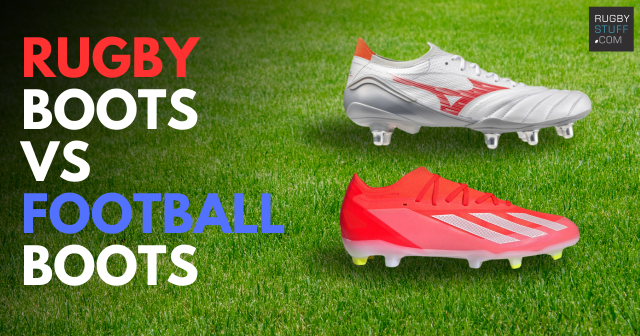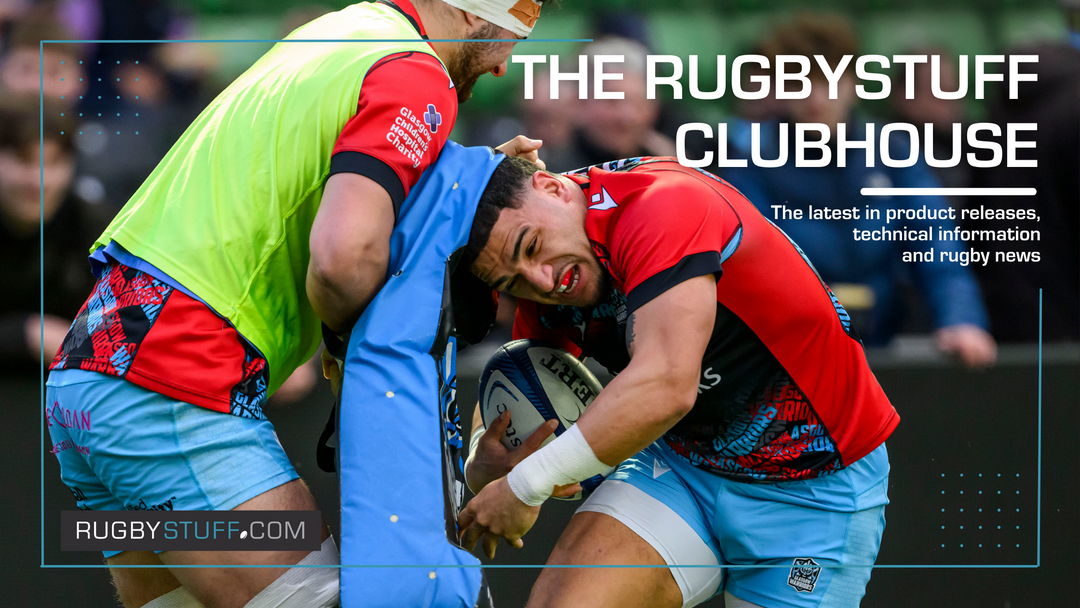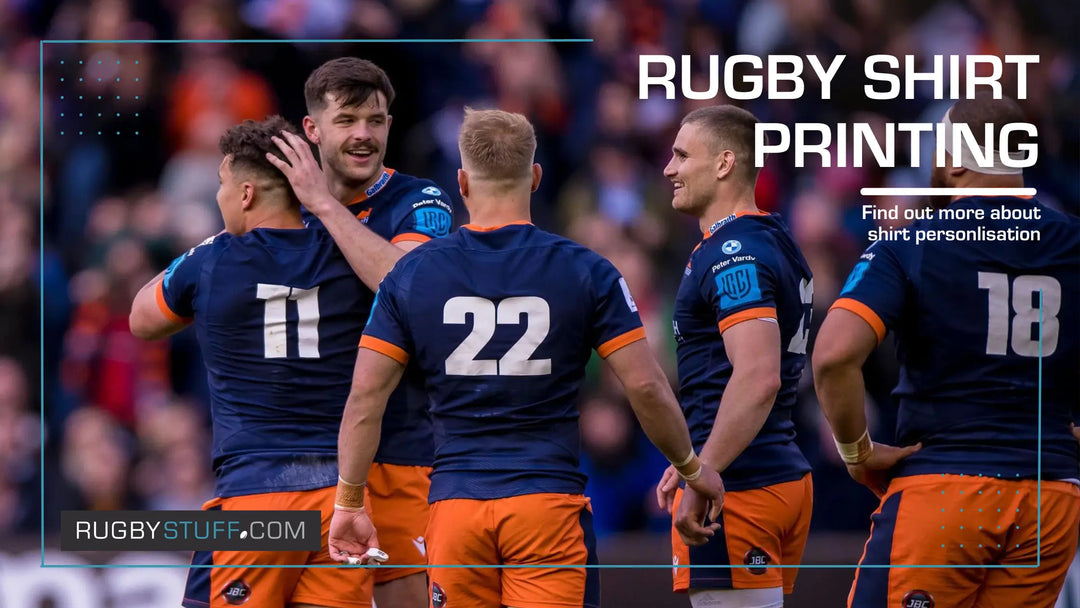Rugby Players Positions Explained: A Beginner's Guide
Rugby positions have always epitomised the inclusive nature of the sport, accommodating individuals of various shapes and sizes.
Each rugby union position demands a distinct blend of physicality and technical skills, making the game accessible to all rugby enthusiasts.
Rugby union positions consist of 15 players placed across the field, and up to 8 players available as substitutions.
In this definitive guide, we will delve into the intricacies of rugby player positions, shedding light on the roles and responsibilities of each player on the rugby field.

Positions in Rugby Union - Section 1: The Forward Pack
The forwards comprise a group of players whose rugby positions shoulder significant responsibilities and play vital roles on the rugby union pitch. They compromise player positions numbers 1 - 8, the front row, second row, flankers and number 8.
From providing a strong foundation for attacks to establishing defensive dominance, these players form the backbone of the team's performance.
Let's delve into the key positions in the rugby union forward pack and uncover the distinctive attributes and tasks associated with each player...
Section 1.1: The Tight Five
Loosehead and Tighthead Prop (Numbers 1 & 3): The Anchors of the Scrum
The front row forwards, comprising the loosehead and tighthead props, form the pillars of the scrum.
These front row rugby players will need to possess exceptional strength in their necks, shoulders, upper bodies, and legs, because they serve as the foundation of the scrum, preventing it from moving backwards, while also supporting the hooker.
The loosehead prop can get away with being slightly smaller and rely on good technique to excel at the scrummage. A potent loosehead prop may also be a strong ball carrier.
However, the tighthead prop is more reliant on brute strength and size to dominate in the scrum.
Interestingly tightheads are one of the better-paid positions in the professional ranks - the reasoning being attributed to the saying 'no scrum, no win! Tightheads are the cornerstone to any scrum.
Additionally, props involvement can also extend to lineout lifting, tackling, rucking and ball carrying - although they might not always thank you for the extra work!
Hooker (Number 2): Masters of Precision
The hooker assumes a pivotal decision-making role within the forward line.
Positioned between the two props in the scrum, the hooker coordinates the timing and strives to win possession by hooking the ball back through the props' legs.
They are responsible for accurate lineout throws and actively engage in open play, securing possession during rucks and mauls.
Why is it always hookers that throw into a lineout? Well the locks and back row tend to be taller players, so are lifted to try and win the ball. And it's the afore-mentioned props doing that lineout lifting, which leaves your hooker as the last forward standing.
Being a destructive ball carrier will be a useful trait for any hooker.
Lock/Second Row (Number 4 & 5): Towers of Strength
Locks, also known as second row forwards, are vital to the scrum's power and act as primary targets during lineouts.
Their tall stature, power, and technical proficiency are prerequisites for success.
Accurate binding and dynamic lineout jumping prevent the opposition from stealing possession.
In recent times, second row rugby union players have evolved into ball carriers during open play, contributing to both support play and tackling.
With their unique genetic traits, seconds rows are among the top-paid professionals, such is the importance of winning lineout possession.
Section 1.2: The Back Row
Flanker/Wing Forward (Numbers 6 & 7): Tireless Workhorses
Flankers are versatile players, excelling in various facets of the game.
They exhibit exceptional all-around skills, encompassing speed, strength, fitness, tackling, and handling.
The flanker actively participates in scrums; lineout jumping or lifting, rucks, mauls, and open play; winning balls, making crucial tackles, and receiving short passes.
The openside flanker focuses on mobility around the field, while the blindside flanker adopts a more physical role.
Both positions are vital in jackaling - the process of stealing possession of the ball from the opposition at a ruck.
Number Eight (Numbers 8): Dynamic and Powerful
The number eight specialises in support play, tackling, and ball-carrying, working alongside the flankers to form the back row.
Positioned at the rear of the scrum, the number eight possesses the unique privilege of picking up the ball from the base of the scrum, making explosive runs to gain vital yards near the opposition's try line.

Section 2: The Back Line
Rugby backs refer to the athletic players in the backline of a rugby team. The backs are the positions in rugby numbered 9 - 15. The backs are responsible for the team's attacking play, as well as defensive duties.
From orchestrating attacks to ensuring defensive solidity, these individuals are instrumental in shaping the team's performance and have a big influence on the scoreboard through scoring tries and kicking goals.
Let's delve into the key positions in the back line and explore the unique attributes and tasks associated with each...
Scrum-Half (Number 9): The General
The scrum-half acts as the linchpin between the forwards and backs, orchestrating attacks.
Their role involves precisely timing the accurate release of the ball to the backs from scrums, lineouts, rucks, or mauls.
If they are going to excel in this position, scrum-halves must possess excellent vision, speed, awareness, quick hands, and lightning reactions.
Generally, they are amongst the shortest of the backs, which helps getting into position to take the ball from the bottom of a ruck and get it out to the attacking line.
They must also be able to interpret all forwards and back moves and communicate seamlessly with both, whilst also relying on protection from their forwards and play a crucial role in maintaining possession.
Stand-off or Fly-Half (Number 10): The Game Director
The stand-off is considered the heartbeat of the team, also known as the fly-half, and they hold the title of the most influential player position on the pitch.
This pivotal position involves making important decisions on when to pass the ball out to the centres or kick for field position.
Acting as the team's playmaker, the fly-half orchestrates the back line and reacts to defensive gaps, thus playing a vital role in executing rehearsed moves and launching effective attacks.
Additionally, the fly-half is responsible for relieving pressure by executing strategic kicks and usually serves as the designated placekicker for conversions, penalties, and drop goals.
In defence, they marshal the backs to ensure effective coverage and possess the ability to thwart opposition attacks with strong tackling.
They are THE best-paid players in the professional ranks such is their massive influence on the team!
Centres (Numbers 12 & 13): Dynamic Runners and Strategic Players
The centre positions consist of an inside centre, who lines up closest to the fly-half, and his partner the outside centre, who stands one position further out.
Both roles require strong, dynamic runners with a keen eye for identifying gaps in the opposing defence.
In the attacking phase, centres run direct lines, aiming to breach the defensive line or draw in defenders to create space for their teammates.
Physical strength and power are essential attributes for these positions, as they engage in head-to-head battles with their opposite numbers.
In addition to their offensive duties, centres must be adept at tackling when flipping to a defensive position.
The inside centre often showcases creativity, possessing excellent passing and kicking abilities akin to the fly-half, while the outside centre brings speed and the ability to offload the ball swiftly to the wingers.
Wingers (Numbers 11 & 14): The Finishing Touch
Stationed on the edges of the field, the wingers are the team's finishers in the attacking phase, although modern players are coming off their wing more often in search of the ball.
Their exceptional pace becomes a valuable asset, enabling them to capitalise on scoring opportunities.
Furthermore, wingers must possess defensive prowess, as they often find themselves as the last line of defence, working diligently to prevent opposition advancements.
Supreme areal skills will also be required for kick reception.
Full-back (Number 15): The Defensive Sweeper and Attacking Catalyst
Positioned behind the entire back line, the full back position assumes the role of a defensive sweeper, providing a last line of defence against opposition attacks.
Additionally, full-backs are frequently entrusted with receiving deep kicks from the opposing team.
Their ability to catch high balls confidently and initiate counterattacks from these possessions is vital.
This rugby position requires a blend of skills, including tackling, kicking, catching, and running, all performed under high-pressure situations.
In conclusion, both the forwards and backs play vital roles in a rugby team's success.
The forward pack, consisting of props, hooker, locks, flankers, and number 8, forms a formidable unit that establishes the team's foundation in set-pieces and open play.
Their physicality, skill, and versatility are instrumental in scrums, lineouts, rucks, mauls, and carrying the ball forward, shaping the team's performance and laying the groundwork for victory.
Simultaneously, the back line players, including the fly-half, wingers, centres, and full-back, bring their unique attributes and skill sets to the game.
Their responsibilities range from directing attacks and creating scoring opportunities to providing defensive stability and launching counterattacks.
Through their combined talents and cohesive teamwork, the back line players contribute significantly to the team's overall performance and strive to achieve victory.
By effectively blending the contributions of both the forward pack and back line players, a rugby team can achieve a balanced and cohesive approach that maximises their chances of success on the field.
The collective efforts of these players, with their diverse skill sets and shared determination, create a formidable force that aims to overcome challenges, seize opportunities, and ultimately triumph in the game of rugby.
Ultimately, there's no rugby position more important than any other - all 15 players work seamlessly together to deliver results on the pitch.







I grew up watching and playing “the other game” but this has been commercially plundered and degraded to the point where there is no respect for the officials, very little adherence to the rules, cheating has become an accepted and integral part of the game and there seems to be a lack of desire in attack to actually take the initiative and score a goal.
On the other hand in Rugby there is enormous respect for the officials, the laws are adhered to, there is very little evidence of deliberate cheating and there is a constant driving desire to get the ball over the line for a try.
Rarely does a rugby game fail to captivate.
The more I watch rugby, the more I enjoy it. Plus the fact that it seems a more family oriented game. Six nations Guinness tournament is an absolute cracker and one to watch the whole programme of games.I used to like watching rugby, now I love it !
Leave a comment